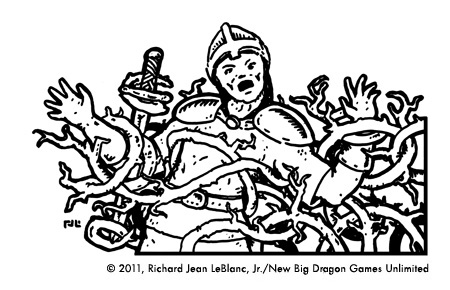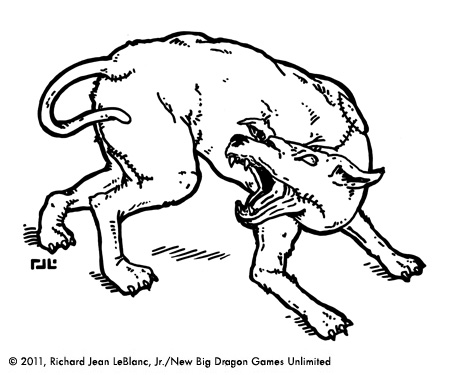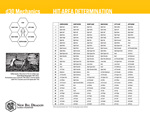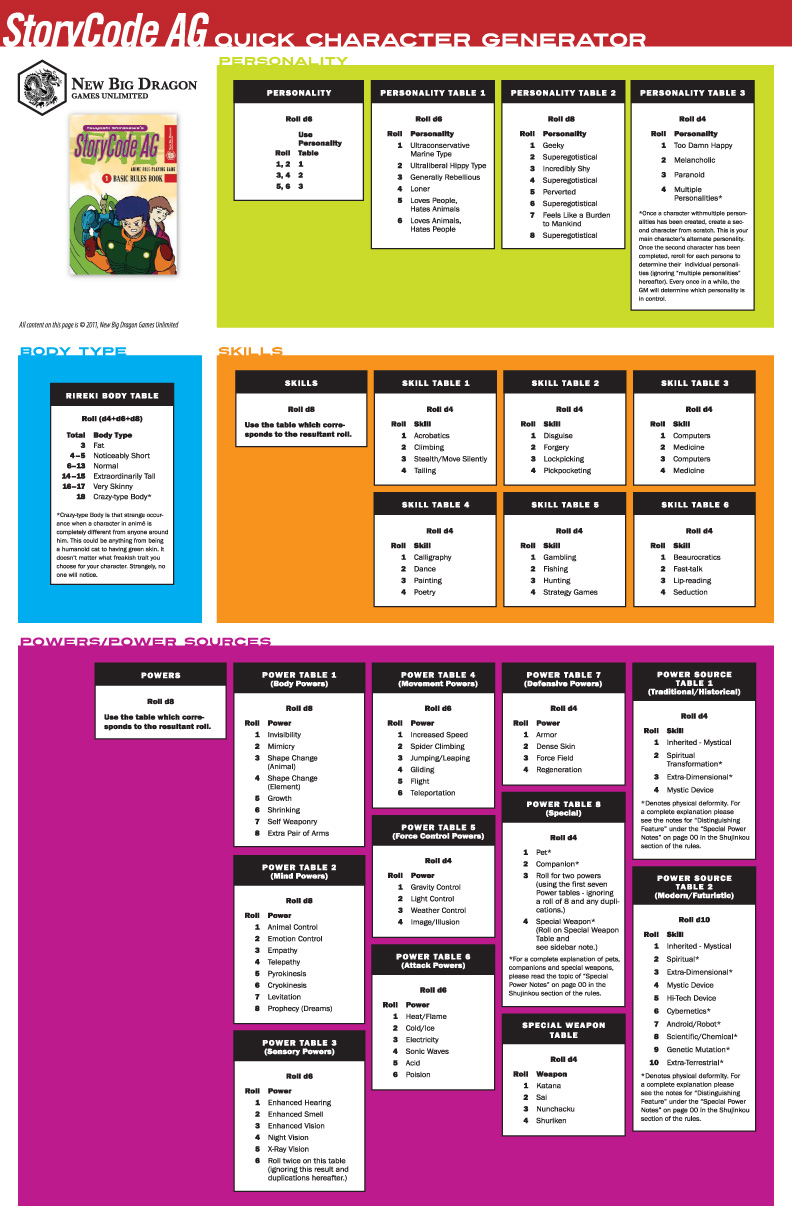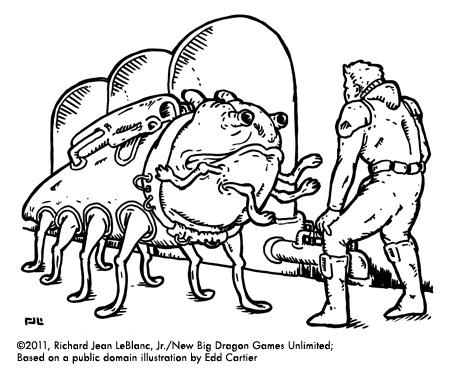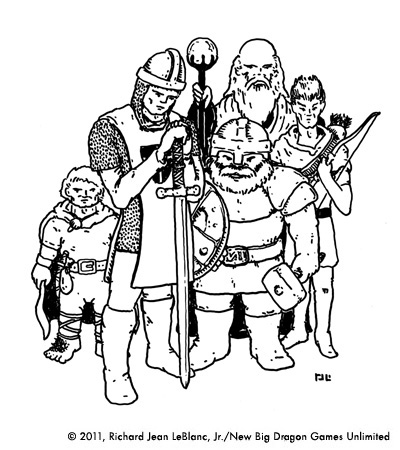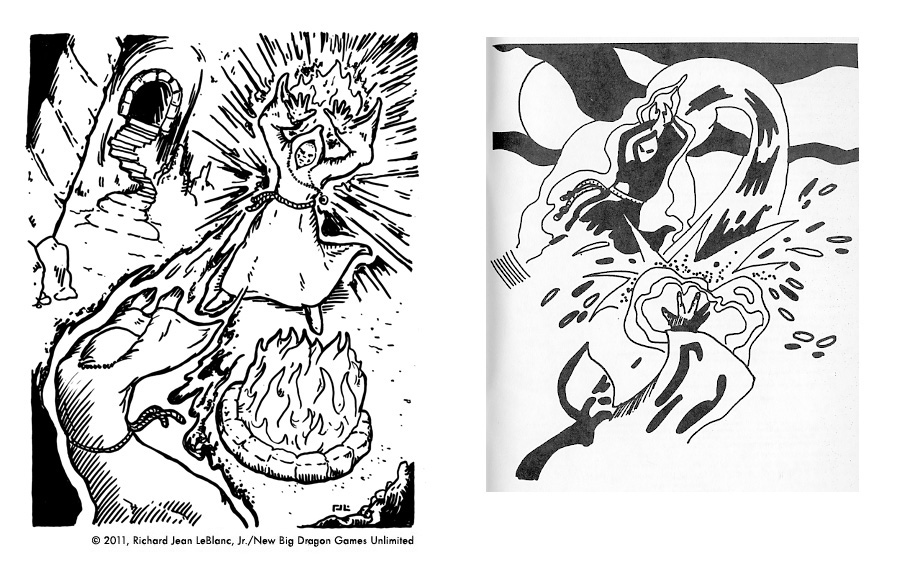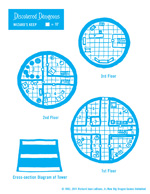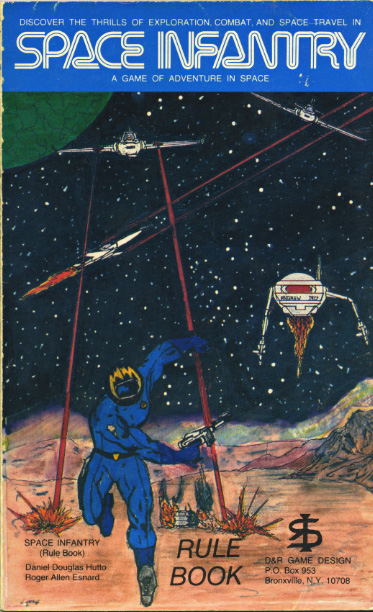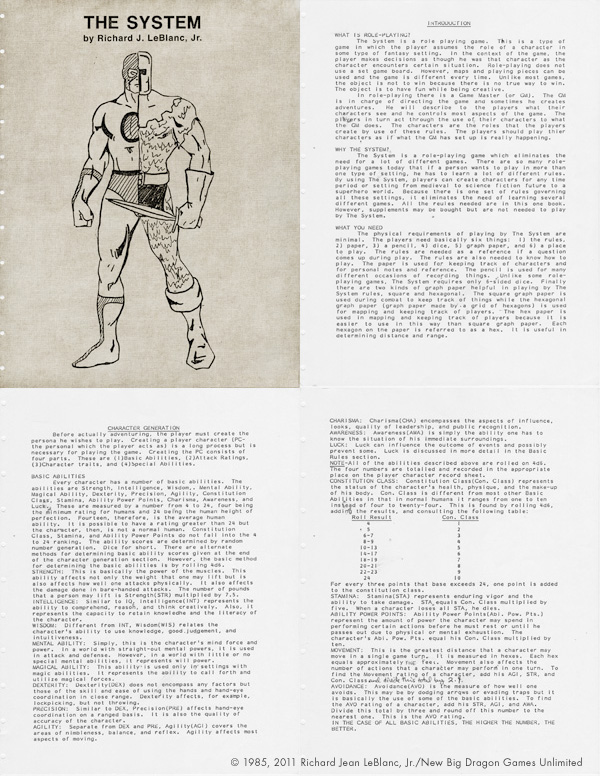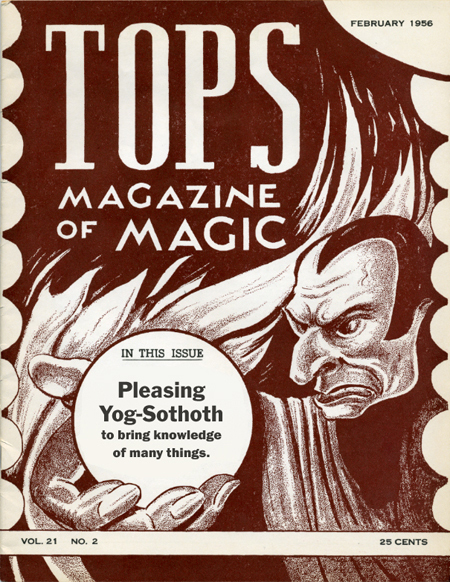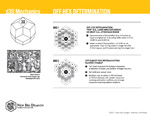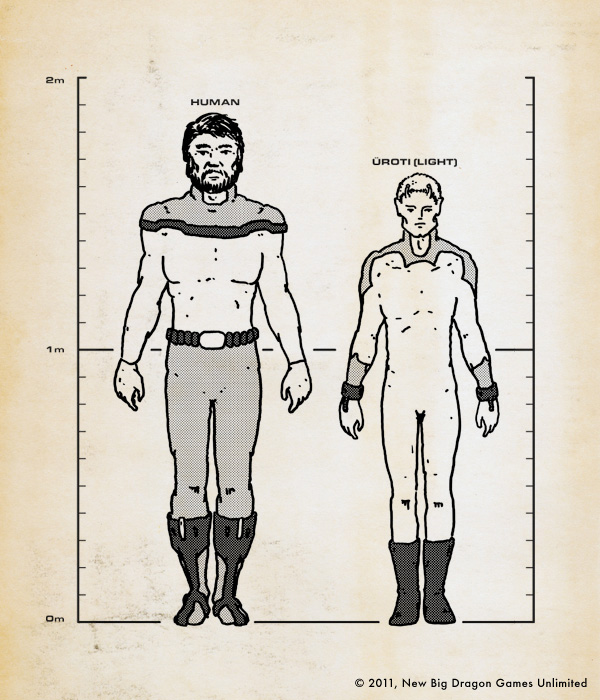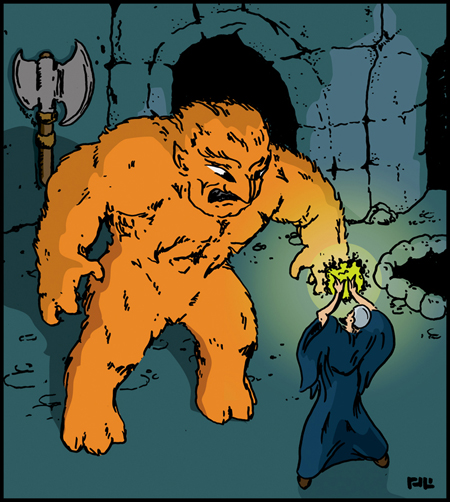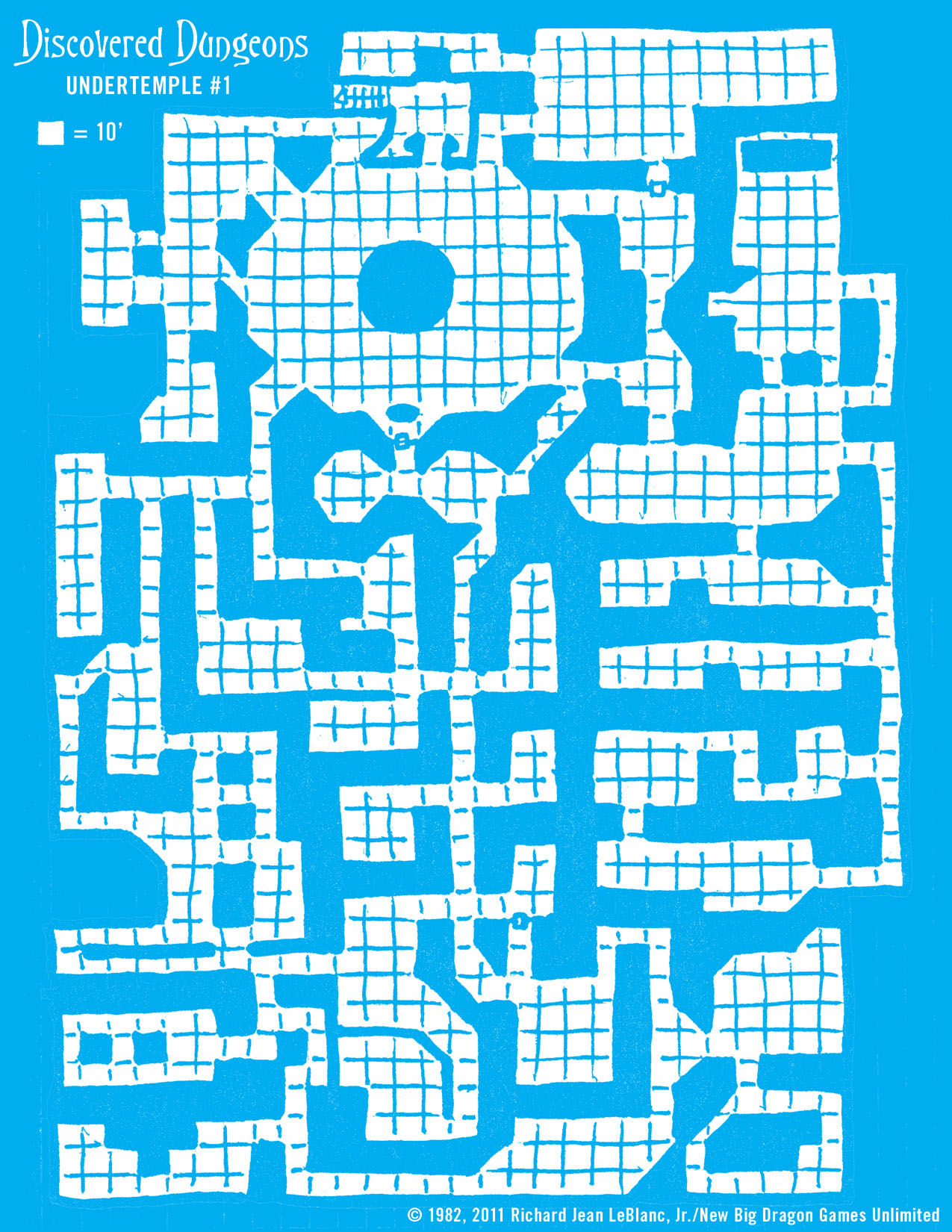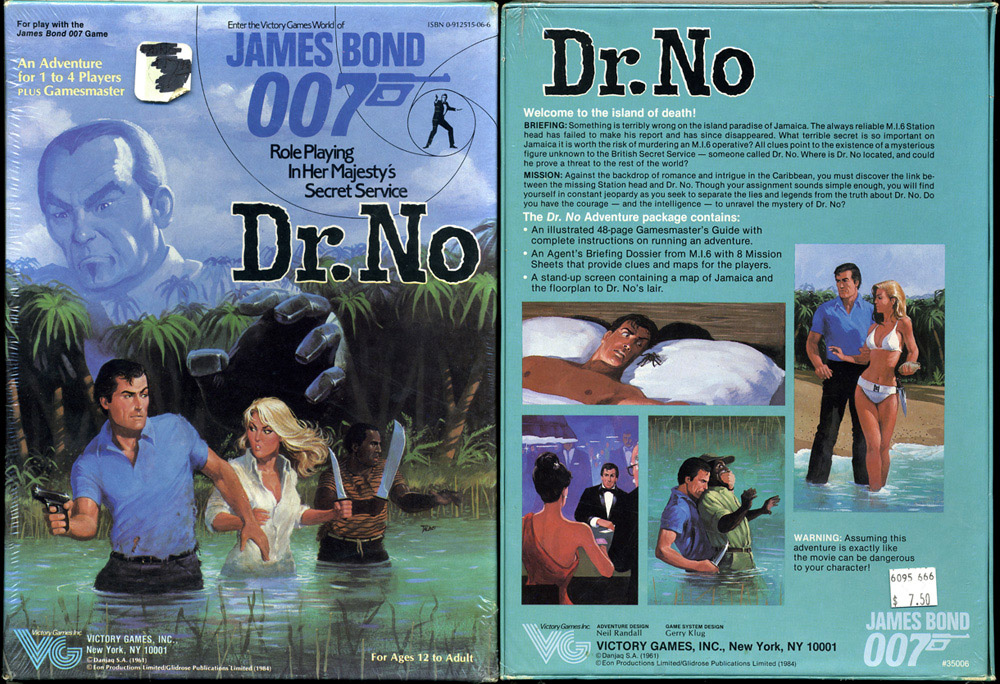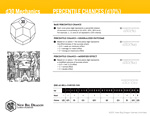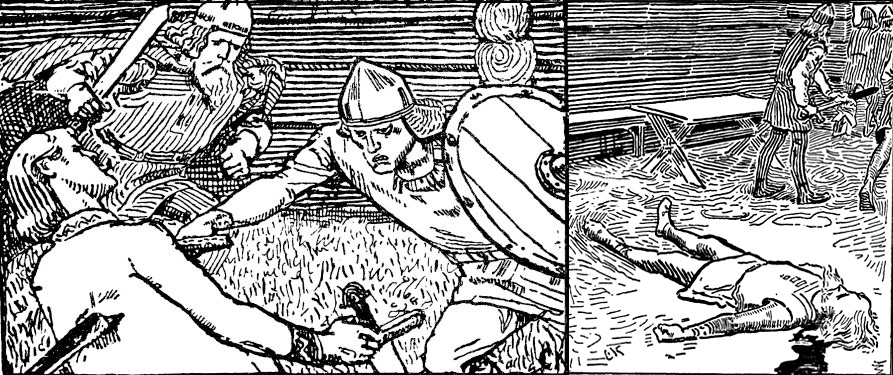I'd like to start off this post by saying "Thank you!" to the 2,000 (and counting) people who, in the last seven months, have downloaded a free copy ofThe System, my universal RPG written originally in the mid-80s. I'd also like to thank Chris's Compendiums of Free Role-Playing Games, John Kim's Free RPGs on the Web, and Rob Lang over at 1KM1KT (1,000 Monkeys, 1,000 Typewriters), all of whom have taken on the vocation of helping rule-makers and home-brewers to get their work out there. Rob even goes above and beyond, working double-duty with the 24 Hour RPG competition, and triple-duty with the Game Chef competition.
So... "What's The System?" you ask?
• • • • • • • • • • • • • • • • • • • • • • • • • • • • •
Some time around seventh or eighth grade (this was around 1980, mind you), I started hearing about this game called Dungeons & Dragons. I knew a couple of guys who played it, but I didn't know much more than that. I remember making the mistake of buying the blue box Expert Set without having played the game or having read the Basic (red) Rulebook. So I saved up another twelve bucks, bought the red box, figured it out (a little anyway), and convinced my younger brother to roll up a character or two. Soon enough we were on our way... to adventure!
The bigger impact on me as a role player came not long after while accompanying my mother on her trip to the hobby shop for cross-stitching supplies. It was there, in a clearance bin, I spied it... a copy of Metagaming's Wizard. It blew me away. It was simple and straightforward. But more importantly, I realized there was more than one RPG out there, and there were other ways of handling character creation and combat.
I moved onto high school, joined the "Warlords" club (our school RPG club) and was exposed to the gamut of games available on the market—simple and fun superhero games, complex medieval games, unique starship combat systems. And the more I discovered, the more interesting it became. Then it hit me... "Why isn't there one RPG that lets you play in any setting or time period." It seemed so natural to me, and I couldn't figure out why no one had done it yet. So I set about creating one.
I'd go to my dad's office every chance I got, sit at that newfangled Wang word processing workstation (you know the one, the big thing with the black screen and green text, the one hooked to that big box on the other table, next to the daisy-wheel printer), and clack-clack-clacked my way through the rules. This early version of “The System” was mostly engineered from the mechanics of other games that made the most sense to me, filling in here and there with some contrivances of my own.
By early 1986, I had a working version of the rules together. I had a few copies printed out, ready to bring them to my gaming group (to see how they played), when a friend showed up at our weekly session with the first couple of GURPS rulebooks. "AAUGH! Somebody beat me to it! (Not that I shouldn't have figured it would happen.)" Staring at those fully-illustrated/typeset/printed GURPS books, I just didn't see the point in continuing with my game.
I went off to college at the end of that summer, got REALLY busy on my schoolwork and lost time to play, and drifted away from the hobby for a while. So my rulebook sat in a folder for years... somewhat forgotten. Until I found them in a box stored in the back of my garage last year, about the same time I discovered the OSR.
Call it nostalgia for those early years, call it the internet “if he can do it, I can do it” attitude, or just call it a waste of virtual space. With a little help from my scanner, an OCR program, and 20 plus years of graphic design experience, I published my original system earlier this year via a downloadable PDF and in a print version through Lulu.com. There was very little content editing (just some clean up for comprehension and a few glaring rule inconsistencies,) and I gave it a decidedly retro bent to the layout and graphics (inspired more by the post white box wave of wargame based RPGs.) So there it is... very raw, but "out there" in the universe nonetheless.
The rules are a little bare-bones and include some very obvious holes (and more typos than I care to mention). Moreover, I feel it to be plagued by the poor writing of a teenager who had yet to discover his voice as a writer, and was doing his best not to plagiarize the writing of the games that "inspired" him.
The new layout, however, is much more user-friendly than the original version produced on that Paleolithic word processor with monospaced daisy-wheel printing and justification forced to the point of illegibility. (It might as well have been chiselled on stone.) And with the addition of a few perfect pieces of vintage public domain clip art, I think it captures the spirit of that early wave of (now “retro”) role playing games. (BTW, there is a much smarter, much stronger, much deeper, and much more streamlined version in the works - The System: Expanded.)
So why did I put it that original (albeit re-published) version out there? Vanity? Legacy? Boredom? Most likely a combination of all three.
I hoped that somebody might find something useful in there, whether it be a game mechanic they'd adapt for their own use, an insight to the home-grown nature of early role-playing games, or (at the risk being committed) a system of mechanics they actually use outright!
So what do those 2,000+ people who've downloaded The System think of it? I have no idea. Though my email address appears with the copyright indicia, I have yet to hear from a single one.
To download a PDF of The System, follow this link to MediaFire.
And don't forget to let me know what you think. I've been in the advertising/design biz for 25 years. I've got thick skin. I can take it.
Monday, October 31, 2011
Sunday, October 30, 2011
New OE/BX Monster: Guardian Bramble
From the upcoming module
OE1 The Mysterious Mist of Foxpond,
an introductory OE/BX OSR adventure
for characters level 1-3.
NO. APPEARING: 4-16
ARMOR CLASS: 6
MOVE: Nil
HIT DICE: 1-2
% IN LAIR: 100%
TREASURE TYPE: Nil
ATTACKS: 1
DAMAGE: See below
ALIGNMENT: Neutral
Guardian brambles are fashioned by magic means from standard bramble bushes.
To create a guardian bramble a medium-level magic-user must enchant the brambles through use of a magical tome, or an 8th-level+ magic-user may use a combination of the following: a polymorph object spell, a strength spell, and a charm monster spell.
Guardian brambles are engaged to perform the simple act of protecting doors and passageways, and will try to stop anyone from passing except as instructed by their creator. A guardian bramble appears larger, thicker, and thornier than a standard bramble, and will never bear fruit (berries.) Each guardian bramble bush stands between 2' and 3' tall, and occupies anywhere from 3-5 square feet of ground. Furthermore, it will appear as a normal plant type and is not usually detected as anything more (unless detected by magic or some similar means) until it is approached or engaged in an effort by and intruding party to pass and access the door or passage beyond it. At that point, it will attack any creature within 3' of the area it protects.
A hit by a guardian bramble indicates that the target (i.e., “victim”) is entwined within it’s branches. Each bush has a strength equal to its current hit points. A victim compares his strength against the bush that has entwined it and has a 10% chance to escape for every strength point of difference (e.g., a 1 point advantage give the victim a 10% chance, a 2 point advantage gives the victim a 20% chance, and so on.) If the victim has a deficit in points, he will take a number of points of damage equal to the difference. Any entwined creature suffers a -1 penalty on it’s “to hit” rolls while entangled.
OE1 The Mysterious Mist of Foxpond,
an introductory OE/BX OSR adventure
for characters level 1-3.
NO. APPEARING: 4-16
ARMOR CLASS: 6
MOVE: Nil
HIT DICE: 1-2
% IN LAIR: 100%
TREASURE TYPE: Nil
ATTACKS: 1
DAMAGE: See below
ALIGNMENT: Neutral
Guardian brambles are fashioned by magic means from standard bramble bushes.
To create a guardian bramble a medium-level magic-user must enchant the brambles through use of a magical tome, or an 8th-level+ magic-user may use a combination of the following: a polymorph object spell, a strength spell, and a charm monster spell.
Guardian brambles are engaged to perform the simple act of protecting doors and passageways, and will try to stop anyone from passing except as instructed by their creator. A guardian bramble appears larger, thicker, and thornier than a standard bramble, and will never bear fruit (berries.) Each guardian bramble bush stands between 2' and 3' tall, and occupies anywhere from 3-5 square feet of ground. Furthermore, it will appear as a normal plant type and is not usually detected as anything more (unless detected by magic or some similar means) until it is approached or engaged in an effort by and intruding party to pass and access the door or passage beyond it. At that point, it will attack any creature within 3' of the area it protects.
A hit by a guardian bramble indicates that the target (i.e., “victim”) is entwined within it’s branches. Each bush has a strength equal to its current hit points. A victim compares his strength against the bush that has entwined it and has a 10% chance to escape for every strength point of difference (e.g., a 1 point advantage give the victim a 10% chance, a 2 point advantage gives the victim a 20% chance, and so on.) If the victim has a deficit in points, he will take a number of points of damage equal to the difference. Any entwined creature suffers a -1 penalty on it’s “to hit” rolls while entangled.
Saturday, October 29, 2011
New OE/BX Monster: Canine Flesh Golem
From the upcoming module
OE1 The Mysterious Mist of Foxpond,
an introductory OE/BX OSR adventure
for characters level 1-3.
NO. APPEARING: 1
ARMOR CLASS: 7
MOVE: 10
HIT DICE: 2
% IN LAIR: 100%
TREASURE TYPE: Nil
ATTACKS: 1
DAMAGE: 2-8
ALIGNMENT: Neutral
A canine flesh golem is a dog that is animated by magical means from the corpses of dead dogs.
To create a canine flesh golem a high-level magic-user must engage the corpse (or corpses) of a dead dog through use of a magical tome, or a 12th-level+ magic-user may use a combination of the following: a polymorph object spell, a strength spell, a charm monster spell, and a wish spell. Synthesizing the creature costs 500 gold pieces per hit point of the creature, and requires two weeks time.
A canine flesh golem will follow only standard canine commands (heel, fetch, growl, attack, etc.) and only from its creator. Additionally, the activities of a canine flesh golem may be “suspended” until triggered by some event (e.g., when someone enters the room.) They are, however, quite unpredictable and there is a 5% chance per melee round that a canine flesh golem will go wild and randomly attack any creature in sight. There is also only a 5% chance per melee round that the creature's master may regain control of the beast.
Canine flesh golems are unharmed by normal weapons, but are normally affected by magical ones. Electrical attacks will actually restore the creatures lost hit points at a rate equal to the damage that sort of attack may normally do (e.g., a 4 point lightning bolt would restore 4 hits points to the creature.) Fire- and cold-based attacks will slow canine flesh golems by 50% for 3-12 melee rounds. Otherwise, most spells will have no effect on the creature.
OE1 The Mysterious Mist of Foxpond,
an introductory OE/BX OSR adventure
for characters level 1-3.
NO. APPEARING: 1
ARMOR CLASS: 7
MOVE: 10
HIT DICE: 2
% IN LAIR: 100%
TREASURE TYPE: Nil
ATTACKS: 1
DAMAGE: 2-8
ALIGNMENT: Neutral
A canine flesh golem is a dog that is animated by magical means from the corpses of dead dogs.
To create a canine flesh golem a high-level magic-user must engage the corpse (or corpses) of a dead dog through use of a magical tome, or a 12th-level+ magic-user may use a combination of the following: a polymorph object spell, a strength spell, a charm monster spell, and a wish spell. Synthesizing the creature costs 500 gold pieces per hit point of the creature, and requires two weeks time.
A canine flesh golem will follow only standard canine commands (heel, fetch, growl, attack, etc.) and only from its creator. Additionally, the activities of a canine flesh golem may be “suspended” until triggered by some event (e.g., when someone enters the room.) They are, however, quite unpredictable and there is a 5% chance per melee round that a canine flesh golem will go wild and randomly attack any creature in sight. There is also only a 5% chance per melee round that the creature's master may regain control of the beast.
Canine flesh golems are unharmed by normal weapons, but are normally affected by magical ones. Electrical attacks will actually restore the creatures lost hit points at a rate equal to the damage that sort of attack may normally do (e.g., a 4 point lightning bolt would restore 4 hits points to the creature.) Fire- and cold-based attacks will slow canine flesh golems by 50% for 3-12 melee rounds. Otherwise, most spells will have no effect on the creature.
Friday, October 28, 2011
d30 Chart of the Week: Hit-Area Determination
This week's d30 Feature presents a hit area determination chart for hex-based combat facing (center facing, right facing, right flank, rear, left flank and left facing.) I have to admit, the chart is really better suited for ranged attacks than for HTH combat, but it's still passable. To download the PDF from MediaFire, click on the image at left or click here.
Thursday, October 27, 2011
Quick Character Generator PDF
This 11"x17" PDF features tables to quickly generate Animé characters but can be easily adapted for use in fantasy, superhero and sci-fi genres for both PCs and NPCs. No ratings or points are assigned, only generalities for the following: 1) body type, 2) personality, 3) skills, and 4) powers/origin of powers.
This chart was developed as part of an early incarnation of StoryCode AG, when character generation was randomly determined rather than an extension of an archetype/pt. build system.
Note: This chart uses a d4, d6, d8 and d10; it does NOT use a d30. (Sorry to disappoint the d30 fans out there; maybe I'll adapt it for d30 use in the coming weeks.)
To download the PDF from MediaFire, click here.
This chart was developed as part of an early incarnation of StoryCode AG, when character generation was randomly determined rather than an extension of an archetype/pt. build system.
Note: This chart uses a d4, d6, d8 and d10; it does NOT use a d30. (Sorry to disappoint the d30 fans out there; maybe I'll adapt it for d30 use in the coming weeks.)
To download the PDF from MediaFire, click here.
Wednesday, October 26, 2011
Starmasters Preview: Sluuth (Character Race)
Sluuth: (singular and plural; a “Sluuth”;
the “Sluuth”; pron. SLOO-uth)
OVERVIEW
The Sluuth are a cumbersome, multi-pedal race, which may be explained by their origins on a high-gravity world. Two sets of eyes (fore and rear) give them 360 degree vision, but their massive size requires the need for constant sustenance and causes narcoleptic behavior.
Their society is dependent on one technology—genetic engineering. As a result of their “purification” through breeding and genetics, there is little variance in appearance among individuals, making it easy to mistake one for another. Additionally, as a by-product of their self-proclaimed “genetic superiority,” they are extremely snobbish when dealing with other races.
Their world is resource-rich and features thirteen vastly different moons. Their government is a technocracy that is ethical in its own way, holding high regard and affording extreme protection to most intellectual property and technological innovation.
Attribute modifications: +1 STR, -1 ACC, -1 MOV, +1 INT, +4 HPs.
SPECIAL ABILITIES
There is a reason that Sluuth are so “genetically conceited,” as they have developed a great number of special abilities through their unique approach to selective genetics.
Acid Glands
Each Sluuth possesses a pair of glands situated at the corners of his mouth that secrets an acidic substance that aids in digestion. They are also able to squirt this secretion at a distance of 1 meter (1 hex,) with the secretion acting as a Type I Acid, with 1 RP on the C Effect Scale.
Resistant Skin
Sluuth skin has been bred to be as protective as possible, giving adult Sluuth Acid, Fire and Electrical Resistance (at 1 RP each,) and a Natural Armor of 1 RP.
Water Abilities
Sluuth have the ability to breathe and move underwater freely with their ACC and MOV unaffected.
Psionic Inability
While the Sluuth’s self-acquired evolution has made them stronger and more intelligent, it has also limited their capacity for natural psionics. Sluuth are, therefore, incapable of achieving psionic abilities without the aid of some sort of external psionic stimulant in the form of neurological equipment. Ironically, their hubris keeps most Sluuth from admitting they need such devices and, as such, will rarely use them.
• • • • • • • • • • • • • • • • • • • • • • • • • • • • • • • • • • • • • • • • • •
Starmasters is the old-school science fiction game of interstellar exploration, conquest, and proliferation. (Currently in development from New Big Dragon Games Unlimited.)
the “Sluuth”; pron. SLOO-uth)
OVERVIEW
The Sluuth are a cumbersome, multi-pedal race, which may be explained by their origins on a high-gravity world. Two sets of eyes (fore and rear) give them 360 degree vision, but their massive size requires the need for constant sustenance and causes narcoleptic behavior.
Their society is dependent on one technology—genetic engineering. As a result of their “purification” through breeding and genetics, there is little variance in appearance among individuals, making it easy to mistake one for another. Additionally, as a by-product of their self-proclaimed “genetic superiority,” they are extremely snobbish when dealing with other races.
Their world is resource-rich and features thirteen vastly different moons. Their government is a technocracy that is ethical in its own way, holding high regard and affording extreme protection to most intellectual property and technological innovation.
Attribute modifications: +1 STR, -1 ACC, -1 MOV, +1 INT, +4 HPs.
SPECIAL ABILITIES
There is a reason that Sluuth are so “genetically conceited,” as they have developed a great number of special abilities through their unique approach to selective genetics.
Acid Glands
Each Sluuth possesses a pair of glands situated at the corners of his mouth that secrets an acidic substance that aids in digestion. They are also able to squirt this secretion at a distance of 1 meter (1 hex,) with the secretion acting as a Type I Acid, with 1 RP on the C Effect Scale.
Resistant Skin
Sluuth skin has been bred to be as protective as possible, giving adult Sluuth Acid, Fire and Electrical Resistance (at 1 RP each,) and a Natural Armor of 1 RP.
Water Abilities
Sluuth have the ability to breathe and move underwater freely with their ACC and MOV unaffected.
Psionic Inability
While the Sluuth’s self-acquired evolution has made them stronger and more intelligent, it has also limited their capacity for natural psionics. Sluuth are, therefore, incapable of achieving psionic abilities without the aid of some sort of external psionic stimulant in the form of neurological equipment. Ironically, their hubris keeps most Sluuth from admitting they need such devices and, as such, will rarely use them.
• • • • • • • • • • • • • • • • • • • • • • • • • • • • • • • • • • • • • • • • • •
Starmasters is the old-school science fiction game of interstellar exploration, conquest, and proliferation. (Currently in development from New Big Dragon Games Unlimited.)
Tuesday, October 25, 2011
Illustration of the Week: Double Shot
Today's 1st Image (at left): Ubiquitous Group Illustration. (Need I say more?)
Today's 2nd Image (below): a drawing inspired by the illustration from page 35 of the D&D White Box "Men & Magic" book (on right.)
Both images ©2011, Richard Jean LeBlanc, Jr./New Big Dragon Games Unlimited. If anyone would like to use either of these illustrations, please contact me for a release. These images are NOT CREATIVE COMMONS! You must have my permission for all distributed/reproduced use! I will, in most cases, be happy to grant it and provide you a PDF or print-resolution JPG. (Thanks for understanding.)
Today's 2nd Image (below): a drawing inspired by the illustration from page 35 of the D&D White Box "Men & Magic" book (on right.)
Both images ©2011, Richard Jean LeBlanc, Jr./New Big Dragon Games Unlimited. If anyone would like to use either of these illustrations, please contact me for a release. These images are NOT CREATIVE COMMONS! You must have my permission for all distributed/reproduced use! I will, in most cases, be happy to grant it and provide you a PDF or print-resolution JPG. (Thanks for understanding.)
Monday, October 24, 2011
Discovered Dungeons: Wizard's Keep
Today's post is another one of my Discovered Dungeons. I obviously use that term loosely since today's map isn't a dungeon, but a keep.
In the secret room off room 5 on the first floor, of I would suggest adding a trap door in the floor to an underground complex. You might also consider putting something in the "dead spaces" between the floors.
Download the map from MediaFire.
In the secret room off room 5 on the first floor, of I would suggest adding a trap door in the floor to an underground complex. You might also consider putting something in the "dead spaces" between the floors.
Download the map from MediaFire.
Sunday, October 23, 2011
1982: Role-playing Infancy and Infantry
I officially declare 1982 as "The Year of the RPG Sucker!" That was the year that saw mainstream outlets like Waldenbooks scrambling to stock their shelves for gaming enthusiasts primed for the hustle. That was the year I bought The Highest Level of All Fantasy Wargaming. (To this day, I still have a particular fondness for Margaret Welbank's illustrations from the book.) It was also the year that I that I bought Daniel Douglas Hutto and Roger Allen Esnard's Space Infantry.
I won't get into detail about the system mechanics or offer too deep a review; you can find that here. The real point of this post is not to criticize, but rather praise. You have to applaud any gamer back then with his own set of rules for having the wear-with-all to organize said ruleset, then dig into their pockets to pay for production and printing (which included typesetting, paste-ups, filmwork and stripping, plates, and then the biggest expense of all... offset printing, because digital printing wouldn't begin to be an option for a couple of decades plus.)
I think more than any other game I ever owned (even D&D), Space Infantry may be the most responsible for my deciding to create my original edition of The System on my dad's Wang (ahem) and copy machine. (It was all I could afford.)
I think we now all take for granted for the ease of the personal computer and the downright bargain of print-on-demand services like Ka-Blam and Lulu. It's led to some really interesting offerings like X-plorers and Planet Eris. Unfortunately, it's also led to some blatant copyright infringement in an attempt to turn a profit.
I always have an appreciation for those who do it for the love of the hobby, regardless of the quality level of the content, mechanics, or layout. It's the scam artists and opportunists that disgust me.
Cover and first 3 pages from The System,
self-published in 1985.
I won't get into detail about the system mechanics or offer too deep a review; you can find that here. The real point of this post is not to criticize, but rather praise. You have to applaud any gamer back then with his own set of rules for having the wear-with-all to organize said ruleset, then dig into their pockets to pay for production and printing (which included typesetting, paste-ups, filmwork and stripping, plates, and then the biggest expense of all... offset printing, because digital printing wouldn't begin to be an option for a couple of decades plus.)
I think more than any other game I ever owned (even D&D), Space Infantry may be the most responsible for my deciding to create my original edition of The System on my dad's Wang (ahem) and copy machine. (It was all I could afford.)
I think we now all take for granted for the ease of the personal computer and the downright bargain of print-on-demand services like Ka-Blam and Lulu. It's led to some really interesting offerings like X-plorers and Planet Eris. Unfortunately, it's also led to some blatant copyright infringement in an attempt to turn a profit.
I always have an appreciation for those who do it for the love of the hobby, regardless of the quality level of the content, mechanics, or layout. It's the scam artists and opportunists that disgust me.
Cover and first 3 pages from The System,
self-published in 1985.
Saturday, October 22, 2011
Knock knock. Who's there? Cthulhu. Cthulhu who?
So at Half-price Books yesterday, I came across this vintage magic magazine from the 1950s and procured said magazine. The cover image struck me as rather "dark," considering this issue featured a host of rope tricks and a bunch of ads selling parlor style magic tricks. Originally, it said "In this Issue: Encyclopedia of Rope Tricks." I think my retouched description suits the image much better.
Friday, October 21, 2011
d30 Chart of the Week: Off-hex Determination
This week's d30 Feature showcases two charts for off-hex determination. The first provides a wider range than your standard "1d6 around target hex" chart, and may be used for "pop" effects (like spring traps or land mines) or "drop" attacks (like overhead bombing.) The second provides a conical off-hex model for use with ranged attacks, with the off-target hexes "widening out" around the target hex. To download the PDF from MediaFire, click on the image at left or click here.
Thursday, October 20, 2011
Schools of Magic and Game Integration

Yoshitsuya Ichieisai, The Battle of Magic, c. 1860. Triptych, 29" by 14".
Last month, the Unfrozen Caveman Dice-chucker posted about his recent revelations on spell categories—specifically based on the 1978 ed. AD&D Player's Handbook. And as Timrod (a.k.a. the "Dice-chucker") noted in his blog post, "no explanation of the significance of these terms was given in the text of the PHB that I've found and, clearly, none is needed to play the game." Yep. That pretty much sums it up.
I came to a similar place as Timrod myself (in regard to 1st edition) myself way back when (c. 1985), as I set out to design my universal RPG system, The System. The idea of categories/schools of magic seemed ripe for the plucking. Since the goal of the magic system in The System was to create templates for spell creation (as there are no classes of magic user, or list of pre-created spells), the idea of categories/schools of magic was a perfect fit for the concept of spell development as a "formula" (A+B+C=Spell.) As part of that structure, each class of magic has a corresponding "value" that effects the overall complexity (in points) of spells that use those classes; classes like divination and property alteration have much lower values than the likes of transmutation and conjuring/summoning. If the GM deems that the effects of a spell deal with more than one school, both values are added into the overall complexity of the spell (which effects the "draw" on magical energies, as well as increasing the chances of failure during casting.)
The idea of schools as a D&D game mechanic wouldn't really come into it's own until the 2e Complete's Wizards Handbook. It was an offering for wizards to specialize, providing them with the typical "let's make it more complicated so you have to constantly look things up and buy more books" approach to the game. What's underneath all those restrictions, requirements and bonuses, however, is little more than more classes, disguised (or "divided" if you prefer) into schools.
In the original edition of The System, I called them "classes" of magic, but in developing the The System: Expanded (currently in development,) I've abandoned that name for two reasons; first, the term "classes" now refers to the types of spellcaster's within a game setting, developed as part of a Magic Profile Template for the world by the GM (FYI, it's a lot less restricting than than the old-school interpretation of the word implies); and second, the categories of magic are now "schools." Part of the reason I prefer the term "school" to "class," or even "category," is that the term implies that a spellcaster must be educated in using that type of spell.
In The System: Expanded, the schools of magic (prev. classes) will no longer have a static value (per the original edition); instead, the value of each school will be determined by the GM's Magic Profile for the world; this allows for types of magic that may be common within a particular setting to have a much lower value than the rarer types of magic within the setting. Additionally, characters who wish to specialize are not restricted by minimum pre-requisites or racial restrictions like the 2e application of schools. Instead, each school has a guiding set of the character's basic attributes that that are factored into a set of parameters that include, among others, the overall value of the school (i.e. "rarity" per the setting) and a character's aptitude (or inaptitude) based on race/genetics. What this produces is a complexity rating that comes into play regarding every aspect of learning and using those types of spells, from training/education time to chance of success/failure when casting to the spell to the strength/weakness of the spell when cast.
My original list of magic classes in The System was very much a direct interpretation of 1st edition AD&D (per the PHB,) but the new version for The System: Expanded uses a regrouped/compacted system with a couple of new category additions. It also continues to support the mixing/crossing of schools, but these mixed schools may be treated as new or unique schools (with an inherent unique value vs. a cumulative one.) The GM may also create altogether different schools in support of the campaign world. For example, a Far Eastern fantasy setting might use schools broken out by the elements (earth, air, fire, water, wood,) that incorporate many of the types of magic normally considered part of the standard schools (protection, alteration/transmutation, divination, et al.)
Want a sneak preview of the schools of magic from The System: Expanded? Check it out here.
Wednesday, October 19, 2011
Starmasters Preview: Üroti (Character Race)
Üroti: (plural only used; no singular; pron. “yoo-RAH-dee”)
OVERVIEW
The Üroti are a diminutive and graceful blue-skinned race, similar in appearance to humans, save for slightly pointed ears and a small pair of antannae on their foreheads. The Üroti appear in two forms, the more common lighter-skinned variation (“Light Üroti) and a rarer darker-skinned variation (“Dark Üroti.”) While all Üroti possess a degree of psionic ability and are traditionally known as healers, the darker-skinned Üroti are naturally more more potent and capable in their healing powers than their lighter-skinned brethren. Dark Üroti are customarily cloistered and secretive of their rituals and traditions, while Light Üroti are much more sociable, welcoming and open to non-Üroti beings. Certain sensory extremes are painful to both varieties.
They once ruled a great empire with their greatest leaders being mystics, but they were utterly defeated in a war, which nearly destroyed them completely. Their government is now essentially non-functional and they control only one planet—an icy, high-gravity, mineral-poor world that is known for its relatively few life forms.
Attribute modifications: -2 STR, +1 ACC, +1 MOV, +1 INT, ±0 HPs.
SPECIAL ABILITIES
The Üroti are natural psionicists. To determine the POW rating of a Üroti, roll 3d6 and add the character’s INT rating, then divide the total by 4, rounding up.
Psychic Healing: All Üroti are trained as younglings in the art of Psychic Healing. Most young adult Light Üroti operate at 2 RPs, while the eldest operate at 5 or 6 RPs. Dark Üroti operate slightly higher, with young adults at 3 RPs and the eldest Dark Üroti at 8 RPs.
Other Psionic Abilities: The secrets of training Üroti for psionic attacks are held close to the vest by the Dark Üroti. While it is not unheard for Light Üroti to be trained in attack abilities, there is only a 1 in 20 chance that a Light Üroti will have access to the proper training. The player should work with the GM to arrange for training a Üroti character (Dark or Light) and determining RPs in specific psionic abilities.
Infra-red Vision: Due to their evolution on their icy home planet, Üroti have developed the ability to “see heat” through Infra-red Vision. It reaches its pinnacle at young adulthood, with 5 effective RPs and operating at a level of 5. Both the RPs and the level of the ability will deteriorate over time, usually falling to half the normal RPs and level by the time most Üroti reach old age.
• • • • • • • • • • • • • • • • • • • • • • • • • • • • • • • • • • • • • • • • • •
Starmasters is the old-school science fiction game of interstellar exploration, conquest, and proliferation. (Currently in development from New Big Dragon Games Unlimited.)
OVERVIEW
The Üroti are a diminutive and graceful blue-skinned race, similar in appearance to humans, save for slightly pointed ears and a small pair of antannae on their foreheads. The Üroti appear in two forms, the more common lighter-skinned variation (“Light Üroti) and a rarer darker-skinned variation (“Dark Üroti.”) While all Üroti possess a degree of psionic ability and are traditionally known as healers, the darker-skinned Üroti are naturally more more potent and capable in their healing powers than their lighter-skinned brethren. Dark Üroti are customarily cloistered and secretive of their rituals and traditions, while Light Üroti are much more sociable, welcoming and open to non-Üroti beings. Certain sensory extremes are painful to both varieties.
They once ruled a great empire with their greatest leaders being mystics, but they were utterly defeated in a war, which nearly destroyed them completely. Their government is now essentially non-functional and they control only one planet—an icy, high-gravity, mineral-poor world that is known for its relatively few life forms.
Attribute modifications: -2 STR, +1 ACC, +1 MOV, +1 INT, ±0 HPs.
SPECIAL ABILITIES
The Üroti are natural psionicists. To determine the POW rating of a Üroti, roll 3d6 and add the character’s INT rating, then divide the total by 4, rounding up.
Psychic Healing: All Üroti are trained as younglings in the art of Psychic Healing. Most young adult Light Üroti operate at 2 RPs, while the eldest operate at 5 or 6 RPs. Dark Üroti operate slightly higher, with young adults at 3 RPs and the eldest Dark Üroti at 8 RPs.
Other Psionic Abilities: The secrets of training Üroti for psionic attacks are held close to the vest by the Dark Üroti. While it is not unheard for Light Üroti to be trained in attack abilities, there is only a 1 in 20 chance that a Light Üroti will have access to the proper training. The player should work with the GM to arrange for training a Üroti character (Dark or Light) and determining RPs in specific psionic abilities.
Infra-red Vision: Due to their evolution on their icy home planet, Üroti have developed the ability to “see heat” through Infra-red Vision. It reaches its pinnacle at young adulthood, with 5 effective RPs and operating at a level of 5. Both the RPs and the level of the ability will deteriorate over time, usually falling to half the normal RPs and level by the time most Üroti reach old age.
• • • • • • • • • • • • • • • • • • • • • • • • • • • • • • • • • • • • • • • • • •
Starmasters is the old-school science fiction game of interstellar exploration, conquest, and proliferation. (Currently in development from New Big Dragon Games Unlimited.)
Tuesday, October 18, 2011
First Illustration in a Long Time
It's been a looooooooong time since I've really done any rpg- or fantasy-inspired drawings or illustrations. I forgot how much I missed it. I'm going to try to do at least one new drawing every week and post it on Tuesdays.
I'm feeling like this image is a little "static." If I had it to do over, I'd probably put the axe in the beast's raised hands.
So to recap...
Tuesdays are "new drawing day."
Fridays are "d30 mechanic/table day."
Image ©2011, Richard Jean LeBlanc, Jr./New Big Dragon Games Unlimited. If anyone would like to use this illustration, please contact me for a release. This image is NOT CREATIVE COMMONS! You must have my permission for all distributed/reproduced use! I will, in most cases, be happy to grant it. (Thanks for understanding.)
I'm feeling like this image is a little "static." If I had it to do over, I'd probably put the axe in the beast's raised hands.
So to recap...
Tuesdays are "new drawing day."
Fridays are "d30 mechanic/table day."
Image ©2011, Richard Jean LeBlanc, Jr./New Big Dragon Games Unlimited. If anyone would like to use this illustration, please contact me for a release. This image is NOT CREATIVE COMMONS! You must have my permission for all distributed/reproduced use! I will, in most cases, be happy to grant it. (Thanks for understanding.)
Monday, October 17, 2011
Discovered Dungeons: Undertemple #1
Download the map from MediaFire.
While digging through some old boxes of gaming materials, I came across a some of my early map designs from some of my initial forays into D&D back in 1981-2. I was in eighth grade at the time, and lucky enough to have a dad who had his own office... and copy machine... and VeloBind machine!!! It was actually how I put together the first version of The System toward 1984-85. (FYI, the poorly-written, daisy-wheel-printed original is something I've been considering sharing at some point. Stay tuned.)
So sometime in 1981-2, I collected the best of my maps, including several dungeons, a tower and a ship (inspired by U1: The Sinister Secret of Saltmarsh), copied the originals and bound those copies into a "volume" titled Maps I. I guess I was expecting to produce Maps II at some point and, if I remember correctly, it was going to feature outdoor/hex maps. I only ever put together that one copy of Maps I.
There are a few supporting illustrations in the "book," and they're about what you'd expect for an eighth-grader who drew moderately well, but had not really had any art lessons proper. The maps? Well, let's just say I'm pleasantly surprised at how well they seem to hold up. The layouts are generally well thought out for the minor dungeon crawls I intended them to be. In some of the rooms on a couple of the maps, I see the faint pencil lines that say things like "monster" and "treasure," but that's about it as far as any kind of notes.
The originals are in black and white, but I've always loved the low-tech look of the 100% cyan (i.e., "single color, but still color") printing on the inside of the early modules, so that's how I'll be sharing them here. The typographic elements are new additions, as is the full cyan bleed, but the map interior is unaltered from the original (outside of the color change.)
I apologize for not providing any sort of additional notes on any of the maps, but you don't need me for that.
Sunday, October 16, 2011
Ingenious Initiative System
I suppose it's a good thing I held back my rant the other day about Half Price Books getting greedy. Not that my complaint doesn't hold up (in the long run it does,) but maybe karma paid me back with a couple of decent finds yesterday. The best of which was this baby... an unopened, still shrink-wrapped copy of the Dr. No adventure from Victory Games James Bond RPG. To clarify, the price sticker on the front (since removed) and back sides are from the adventure's life before Half Price. The HP sticker was also easily removed, and its $9.98 price was more than reasonable for this item.
For those of you who've never played it, James over at Grognardia is right when he says that "...its designers and writers really got the world of James Bond and tailored their game to provide it to players and referees alike." One of the most ingenious things to me about the game's mechanics is the initiative system.
The James Bond Initiative System: All characters involved in a chase or combat declare their actions in reverse order of Speed (1-3, based on the sum of Perception and Dexterity), then those actions are executed in order of speed (highest to lowest,) giving faster characters the advantages of knowing what slower characters are going to do, and being able to take their action earlier.
It's honestly the perfect system for any genre where the hero is larger-than-life, and particularly the d30 pulp system I'm developing. Granted, it does make more sense for the Doc Savage/Flash Gordon style hero, and it may not work as well to emulate the style of the Weird Menace or Hardboiled Detective genres. However, as an optional initiative/action, something similar should work rather nicely.
Saturday, October 15, 2011
Inter vs. Extra Dimensional
Just a refresher course in dimensional physics...
Inter is a prefix that means between or among the group. So, interdimensional is a description that refers to something that moves between different dimensions (conjuring or summoning, for example.)
Extra is a prefix that means outside or beyond, so extradimensional would mean something that is outside a particular dimension (like teleportation.)
At left: The Astral Sleep by Jeroen van Valkenburg, 1998.
Inter is a prefix that means between or among the group. So, interdimensional is a description that refers to something that moves between different dimensions (conjuring or summoning, for example.)
Extra is a prefix that means outside or beyond, so extradimensional would mean something that is outside a particular dimension (like teleportation.)
At left: The Astral Sleep by Jeroen van Valkenburg, 1998.
Friday, October 14, 2011
d30 Mechanic of the Week: Percentile Effects
I now declare Fridays as "d30 Day!" I will try to develop a d30 dice mechanic (or, in lieu of an actual idea, some sort of generation table) and post it every Friday. That way, anyone who'd like to may try to incorporate it into their weekend game play. Today's mechanics: d10% + effects.
These tables show mechanics for using the d30 to interpret percentile chances of success (in increments of 10%) while also generating the condition of the outcome (as either weak/average/strong, or as half, normal and double effect.) Also included are suggested die notations and the table for using the d30 to create a bell-curved d10 result (from my post earlier this week.) To open the PDF, click on the image at left or click here.
These tables show mechanics for using the d30 to interpret percentile chances of success (in increments of 10%) while also generating the condition of the outcome (as either weak/average/strong, or as half, normal and double effect.) Also included are suggested die notations and the table for using the d30 to create a bell-curved d10 result (from my post earlier this week.) To open the PDF, click on the image at left or click here.
Thursday, October 13, 2011
Heimskringla
Nope. It's not the newest home furnishing item from Ikea. But you're in the ballpark.
Heimskringla is the Old Norse name for a collection of tales about the Norwegian Kings from the eighth century to 1777 AD. The writer is one Snorri Sturluson, an Icelandic historian, politician, and "poet." Now I say poet loosely, though he is generally credited as such, because most of the Heimskringla reads like little more than a line by line account of kicking ass and taking names—notoriously so. Check out Ziggy's Cynical Summary of Heimskringla. Of course, I don't speak the native tongue and and can only read the English translation, so I'll have to take the word of the Norwegians who've read it that Sturlson is credible and/or competent as a "poet."
Is there campaign fodder in there? Sure. Why not? For example, King Hakon's sword was called Kvernbit. The name means "stonecutter" and the sword was supposedly so sharp you could stick in a rock—sounds like just the ticket for killing those nasty Stone Golems. (I smell a quest coming on!) It's worth poking a round a little bit in those sagas to see what you come up with.
By the way, I do realize that Ikea is Swedish and the Heimskringla is Norwegian, and that there is a difference. So don't be a drittsekk.
• • • • • • • • • • • • • • • • • • • • • • • • • • • • • • • • • • • • • • • • • •
UPDATE: I just found these Heimskringla miniatures by Heroics & Ros, a UK-based minis company. (The line was formerly owned by Kremlin Miniatures, also UK-based.)
Wednesday, October 12, 2011
Judges Glut (er... I mean "Guild.")
For a while now (about 20 years,) I've made the rounds of the local Half Price Books stores on a regular basis, looking for bargain additions to my RPG collection. (I had a much longer rant here about how there are no more bargains at HPB now that their buyers are looking up things on the internet and pricing them comparably to the likes higher end ebay sellers, Troll and Toad, Noble Knight Games and Wayne's World of Books.) Gone are the days when I could pick up a copy of Superhero 2044 for $3.98. Now the only thing I can get for that kind of price is stuff like this...
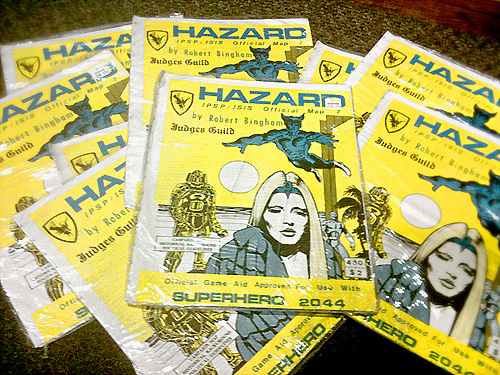
What I really want to know is where all of this Judges Guild stuff came from suddenly a few months ago. If I never see another copy of Fifty Starbases, Tancred, or Tarlkin's Landing it will be too soon. (Not to mention Hazard, even though I did buy a copy for myself as a companion to owning Superhero 2044.) Don't worry, I haven't seen anything as desirable as City State of the Invincible Overlord or The First Fantasy Campaign, but I was able to pick up a few copies of The Dungeoneer, as well as Heroes and Villains, Fantastic Personalities, and Ready Ref Sheets. But honestly, I paid about the same as they're going for on ebay (and that's if you include S&H.)

What I really want to know is where all of this Judges Guild stuff came from suddenly a few months ago. If I never see another copy of Fifty Starbases, Tancred, or Tarlkin's Landing it will be too soon. (Not to mention Hazard, even though I did buy a copy for myself as a companion to owning Superhero 2044.) Don't worry, I haven't seen anything as desirable as City State of the Invincible Overlord or The First Fantasy Campaign, but I was able to pick up a few copies of The Dungeoneer, as well as Heroes and Villains, Fantastic Personalities, and Ready Ref Sheets. But honestly, I paid about the same as they're going for on ebay (and that's if you include S&H.)
Tuesday, October 11, 2011
d30 as Bell-curved d10
In working on the dice mechanics for the d30-based RPG, I'd created a set of tables showing how to roll a d30 as other types of dice (specifically d2, d3, d5, d6, d10, and d15.) This has more to do with the mechanic of the Action Table for resolving contests and challenges than it does with actually using the d30 to produce the types of results mentioned above (in parentheses.) But it did lead me to an interesting thought... what about using the d30 to produce a bell curve of results (like the ubiquitous 3d6 rolls we've all grown accustomed to.)
The 3d6 bell curve does have the advantage of making the extreme rolls (3 and 18) fairly rare (.46%) compared to how common the center rolls of 10 and 11 are (12.5% each.) While the extreme rolls on the d30 are about 7 times more likely to pop up than their 3d6 counterparts (with a result of 1 or 30 coming in at 3.33% chance each.) The 3d6 curve also allows for 16 different results, while the d30 curve only allows for 10. So let's take a look at how the d30 curve above compares to a 2d6 roll.
A 2d6 roll allows for 11 results (vs. the d30's 10.) But the general odds are much more in line with the d30, and they are: 2-2.78%; 3-5.56%; 4-8.33%; 5-11.11%; 6-13.89%; 7-16.67; 8-13.89%; 9-11.11%; 10-8.33%; 11-5.56; 12-2.78%. But with no "center" number like the 2d6 roll, the roller's highest chances aren't a single target number, but are split between the two center numbers.
So what it comes down to is this... the d30 as a bell-curved d10 is moderately comparable to a 2d6 roll, but is not substitution for a 3d6 bell curve.
A d30-based RPG System
A few weeks ago I had a chance to visit/hang with my best friend from grade/high school. He was never a gamer type, but he didn't judge me for being one either. Better yet, he (in a weird, silent way) seemed to encourage it. In fact, on a trip to Colorado in the mid-1980s, he returned with a birthday gift from a game/hobby store he'd come across in the mall... one of Gamescience's original d30s, and a white cover edition of The Armory's 30-sided Dice Gaming Tables.
About the same time he'd given me that, I started to get into Champions and Car Wars and all of those other games at the time that forsook the polyhedrals that the birth of the industry had so wonderfully embraced. I'd even started to work on my own generic RPG using nothing but d6s. Needless to say, the d30 languished unused in my dice case, even as I started to re-embrace the d10s and d20s, and eventually even the d12s, d8s, and the lowliest of all dice... the d4 (though I still don't like the way the d4 "rolls.")
So after my recent reconnection with my friend, I decided to reconnect with my d30 as well. And as most people tend to do when they've run into an acquaintance, or met somebody at a bar, I googled it. I looked to see how available they were, and what my copy of the gaming tables were selling for. I found a few proponents, like The Order of the d30.
Then I looked to see if anyone had developed a d30 RPG system, and I found Nexus Arcana. I was a little more than disappointed when I looked through the basic rules and the first die I saw mentioned was the d8... then the d6... then finally the d30. So my new goal came to be an RPG that uses the d30—and ONLY the d30. But what genre? What era?
Well, between my unhealthy obsession with Boardwalk Empire, and PBS's recent airing of Ken Burns' "Prohibition" documentary, I started thinking gangsters, and that led me to pulp stories. What better era for a d30 game than the 1930s? So that's where I landed.
I have the basic mechanic developed and it uses the versatility of the d30 in way reminiscent of Marvel Superheroes Universal Table from the '80s. Don't misunderstand, it will not handle the wildly diverse power levels of a comic book supers game. It does, however, seem to support well the pulp hero who is capable of taking out lackey after lackey and henchman after henchman without trouble, and take on stronger opponents without dying.
Stay posted for updates and previews!
Subscribe to:
Posts (Atom)



